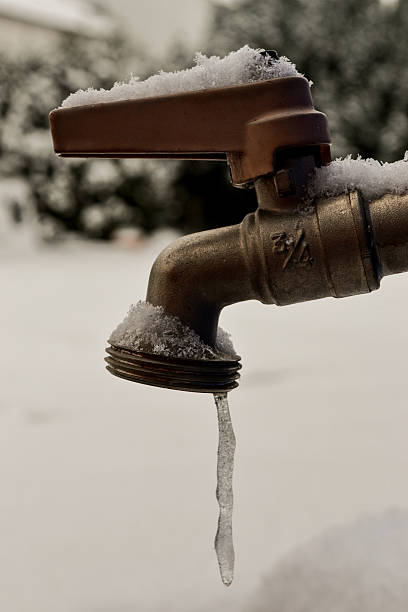They are making a few good points about How to Prevent Your Pipes From Freezing in general in the article in the next paragraphs.

Cold weather can ruin your plumbing, specifically by freezing pipes. Below's how to avoid it from taking place and what to do if it does.
Intro
As temperatures drop, the risk of frozen pipes increases, potentially resulting in expensive repair services and water damages. Comprehending exactly how to avoid frozen pipes is essential for property owners in cold environments.
Avoidance Tips
Protecting susceptible pipes
Cover pipes in insulation sleeves or use warmth tape to shield them from freezing temperatures. Focus on pipelines in unheated or exterior locations of the home.
Heating strategies
Maintain interior areas effectively heated, specifically areas with pipes. Open cupboard doors to permit cozy air to distribute around pipes under sinks.
How to recognize frozen pipes
Try to find decreased water flow from taps, unusual odors or sounds from pipelines, and visible frost on revealed pipelines.
Long-Term Solutions
Structural changes
Take into consideration rerouting pipes far from outside wall surfaces or unheated areas. Add extra insulation to attic rooms, basements, and crawl spaces.
Upgrading insulation
Purchase top notch insulation for pipelines, attics, and walls. Proper insulation helps maintain regular temperatures and reduces the threat of icy pipelines.
Securing Outside Plumbing
Garden tubes and outside faucets
Disconnect and drain pipes yard hose pipes prior to winter months. Set up frost-proof spigots or cover outdoor faucets with shielded caps.
Comprehending Icy Pipelines
What causes pipelines to ice up?
Pipelines ice up when revealed to temperature levels below 32 ° F (0 ° C) for expanded periods. As water inside the pipes ices up, it expands, putting pressure on the pipeline walls and possibly creating them to burst.
Dangers and problems
Icy pipes can lead to supply of water interruptions, home damage, and costly repair services. Burst pipelines can flooding homes and cause extensive structural damages.
Indicators of Frozen Piping
Identifying icy pipelines early can prevent them from rupturing.
What to Do If Your Pipes Freeze
Immediate actions to take
If you believe frozen pipes, keep taps open up to relieve stress as the ice thaws. Make use of a hairdryer or towels taken in warm water to thaw pipes gradually.
Verdict
Preventing frozen pipelines calls for positive actions and fast reactions. By understanding the reasons, signs, and safety nets, property owners can shield their plumbing during cold weather.
5 Ways to Prevent Frozen Pipes
Drain Outdoor Faucets and Disconnect Hoses
First, close the shut-off valve that controls the flow of water in the pipe to your outdoor faucet. Then, head outside to disconnect and drain your hose and open the outdoor faucet to allow the water to completely drain out of the line. Turn off the faucet when done. Finally, head back to the shut-off valve and drain the remaining water inside the pipe into a bucket or container. Additionally, if you have a home irrigation system, you should consider hiring an expert to clear the system of water each year.
Insulate Pipes
One of the best and most cost-effective methods for preventing frozen water pipes is to wrap your pipes with insulation. This is especially important for areas in your home that aren’t exposed to heat, such as an attic. We suggest using foam sleeves, which can typically be found at your local hardware store.
Keep Heat Running at 65
Your pipes are located inside your walls, and the temperature there is much colder than the rest of the house. To prevent your pipes from freezing, The Insurance Information Institute suggests that you keep your home heated to at least 65 degrees, even when traveling. You may want to invest in smart devices that can keep an eye on the temperature in your home while you’re away.
Leave Water Dripping
Moving water — even a small trickle — can prevent ice from forming inside your pipes. When freezing temps are imminent, start a drip of water from all faucets that serve exposed pipes. Leaving a few faucets running will also help relieve pressure inside the pipes and help prevent a rupture if the water inside freezes.
Open Cupboard Doors
Warm your kitchen and bathroom pipes by opening cupboards and vanities. You should also leave your interior doors ajar to help warm air circulate evenly throughout your home.

Do you enjoy reading up on Preventing and dealing with frozen pipes? Put a comment down the page. We would be happy to listen to your reactions about this page. We hope to see you back again soon. Make sure you take the opportunity to share this page if you appreciated it. Thank you for going through it.
Click Here